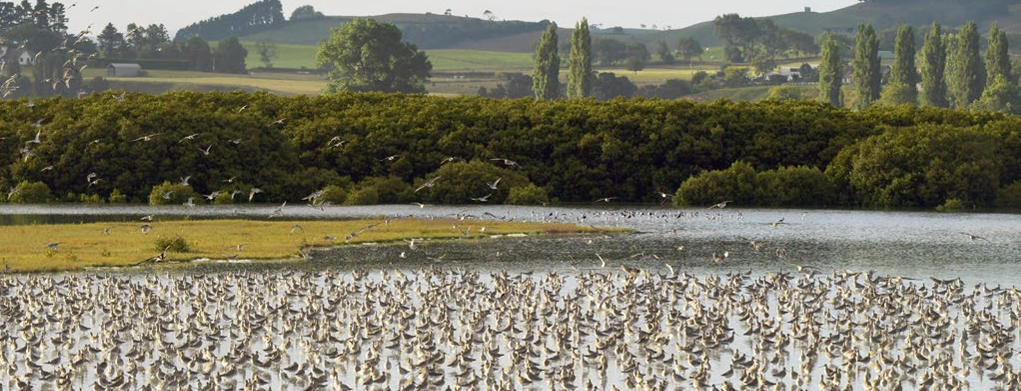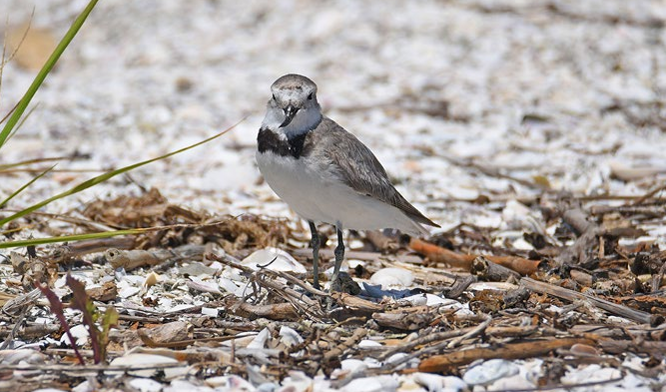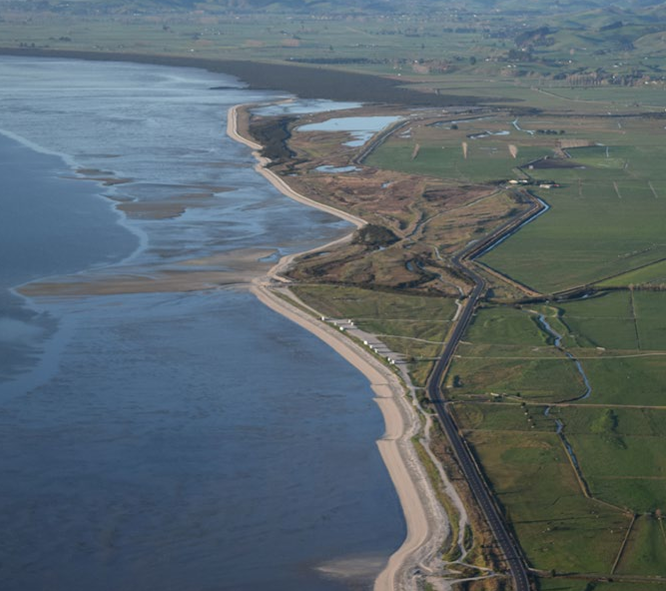What does the change of government mean for environmental policy and wildlife protection? Pip Wallace investigates.
The environmental rollbacks have started and there are more on the horizon. Plenty of interest groups, property owners and resource users are cheering on the walking back of environmental law and policy in Aotearoa New Zealand. Goodbye red tape, compliance costs and hassle, hello streamlined resource use and management.
For wildlife protection there is no cheering. The rolling back of environmental protection seems counter-intuitive at a time when human induced climate change deepens the biodiversity crisis and ecosystem degradation and failure.
Reporting on the latest figures the Ministry for the Environment & Stats NZ (2023) identify that the “Impacts of climate change are cascading through ecosystems and compounding other threats such as invasive species and human disturbances”. In addition, habitat loss and climate change interact to exacerbate population decline and extreme weather events have direct and damaging impacts on our ecosystems, as well as people. The report identifies a series of losses to habitat and species including the risk to Tara iti (Fairy Tern) of losing its breeding habitat to storm surges, and the wiping out of an entire breeding season of Kororā (Little Penguin) on Otata Island and the growing spectre of wildfires.

Faced with deepening problems for wildlife, any potential reduction in protection is disquieting for all those invested in the protection of taonga species and habitat. The new (and now repealed) Natural and Built Environment Act 2023 (NBEA) provided valuable reshaping of approaches to protection, including greater incorporation of Te Ao Māori approaches, which in turn underpin protection for the natural environment. The law was intended to be supported by streamlining of local authority functions, fewer resource plans and stronger spatial planning at the regional level. These measures (amongst others) support better planning and protection, which we will explain in context shortly. But with a lifespan of 123 days the new law was gone by lunchtime, forcing a reversion back to the Resource Management Act 1991 (RMA).
This regulatory ping pong is accompanied by government commitment to review the National Policy Statement for Indigenous Biodiversity 2023 (NPSIB) and the National Policy Statement for Freshwater Management 2020 (NPSFW). The NPSIB is an extreme example of wildlife protection policy subject to the vagaries of political preference. Way back in the deep recesses of the early 2000s an National Policy Statement was proposed and finally introduced as a draft in 2010. Politically contested, it finally saw policy daylight in 2023. Criticism has been levelled at the lack of central government direction under the RMA, for which, the NPSIB with its tortured history, must surely be the poster child.
Underlying this slow progress are the social, cultural, and economic contests which arise in relation to environmental management. Concepts such as property rights, economic efficiency, and reduction in regulatory red tape feature heavily in the debates related to protection of biodiversity on private land. The identification, mapping, and protection of Significant Natural Areas (SNA) – the policy vehicle developed to secure habitat and species protection – have been loudly decried by landowners and interest groups. In addition, Iwi, with a history of land loss and confiscation, have concerns related to infringement of rights guaranteed under the treaty. Accordingly, there has been significant push back against the provisions of the NPSIB which extend the identification and restrictions that may apply to land classed as an SNA. Policymakers have paid careful attention to these concerns as evidenced by the detailed provisions in the NPSIB, for instance, by developing policy exceptions for classes of land or resource users. But for many this is not enough; the lobbying has been loud and the NPSIB may also soon be “gone by lunchtime”.
We seem to have come to the thin edge of the wedge – caught between a deepening environmental crisis and landowners and resource users struggling with the increasing burden of amending practices to limit harm to the environment. Due to climate change, times are changing and faster than we apprehend. The science tells us we need to build greater resilience into our systems and yet the cost of this is unacceptable to many.
To account for this, in certain international and domestic policy regimes, the principle of non-regression of environmental law is applied. The point of this principle is that when environmental protection is secured through law and policy, the ability to weaken or “walk back” the law should be limited. In this manner, the environment has the benefit of a steady and progressive approach and in addition trading parties have a degree of security that the regulatory backdrop is on a level playing field.
Walking back environmental protection will produce fewer beneficial outcomes for threatened habitats and species in the Miranda Pūkorokoro locale. The area is currently subject to a raft of conflicting and confusing policy instruments because of incremental legislative effort and spatially bound agency mandates. A more consistently protective approach to habitat and species protection is required. The integrated regional approach to planning established by the NBEA provided a key opportunity to deliver more consistent outcomes for biodiversity protection, backed up by spatial planning enabled by the Spatial Planning Act 2023.
Currently approaches to demarcation of Significant Natural Areas (protected under s 6(c) RMA) can be a bit hit and miss. In Pūkorokoro, a portion of the area is identified and mapped by one Council as an SNA, but this protection stops abruptly due to agency boundaries. Same area, same vegetation, same species but different territorial authority. This demonstrates a lack of horizontal consistency between agencies. Vertical inconsistency is also apparent. For instance, there is a controversy brewing in relation to a development in Matarangi, Coromandel, where a site has been cleared which was identified by the Waikato Regional Council as an SNA in a desktop exercise, but not included in the local District Plan. As this matter is currently before the courts, we cannot examine further, but it is certainly one to watch. Our environments would benefit from a more consistently protective approach. [SEE SIDEBAR PMNT submission to WRC Coastal Plan]
Wildlife mobility is a confounding issue for consistent protection. Threatened birds and bats range (and often widely) as part of their life cycle and levels of protection may alter depending upon their whereabouts. Attaching protection to the threatened species in addition to significant habitat is a more consistently protective mechanism. The NPSIB introduced policy protection for highly mobile species which is progressive and would support extended protection of many species currently found at Pūkorokoro Miranda. Of the forty-nine bird and bat species named as highly mobile in Appendix 2 of the NPSIB over half inhabit the Miranda Pūkorokoro area. These include Ngutu parore Wrybill, Huahou Red Knot, Kuaka Bar-tailed Godwit, Pohowera Banded Dotterel, Tārapukā Black-billed Gull, Tara/ White-fronted Tern, Moho-pererū Banded Rail and Matuku/Bittern.

The NPSIB provides stronger wildlife protection by strengthening provision for identifying, mapping, and protecting SNAs, making agency responsibility clear and providing for protection of highly mobile fauna areas outside of SNAs. These hard-won policy gains for wildlife were overdue but will now be reviewed by the government.
In any review it is likely that strong claims related to property rights, practicality and legitimacy will be raised in opposition to SNAs. These require careful consideration and examination in context. At the same time, it must be remembered that with rights come duties, of which we would argue, protection of wildlife is one. The extinction profile for biodiversity is very different in Aotearoa than in many other countries. We have unusually high numbers of threatened and at-risk species and many of these are found on private land.
In the Pūkorokoro Miranda area threatened and at-risk species move daily between protected areas such as the Ramsar site, the Robert Finlay Reserve (QE II covenant), Department of Conservation wildlife reserve, and unprotected coastal marine areas as well as unprotected terrestrial and wetland areas on private land. Where private land is subject to an SNA, protection of biodiversity is elevated in situations where adverse effects will be caused to biodiversity, for instance from new subdivision and development. Under the RMA any development that requires a resource consent, will be required to identify threatened and at-risk habitat and species as part of the Assessment of Effects process set out in Schedule 4, regardless of whether it is an SNA. But the importance of notation as an SNA is that the owner of the property and the relevant agencies will be put on notice as to the values at the site. This avoids issues such as clearance of sites where threatened species subsist but are cryptic or not recognised as such.
A better approach to wholesale dismantling of much needed SNA protection is to locate opportunities to support and incentivise landowners to be kaitiaki guardians of the land, water, and biodiversity, and to work in conjunction with agencies and local interest groups to produce gains for all. Across the catchment there are many fine example of resource users, iwi and community groups taking significant steps to restore and enhance the environment. Supporting and enabling extension of these efforts is to be encouraged. In the Pūkorokoro area this includes the work of the Tiaki Repo ki Pūkorokoro Trust and the Western Firth Catchment Group.

We are seeking greater protection for the coastline south of Taramaire Stream (Centre) to beyond the Pūkorokoro Stream mouth. The area is subject to incursions from motor bikes and other vehicles, posing a substantial risk to wildlife.
In addition to reviewing the NPSIB, the Government will replace the National Policy Statement for Freshwater Management 2020 and the National Environmental Standards for Freshwater to better reflect the interests of all water users. This focus on commercial water users, again looks grim for ecosystems, habitat, and species. The State of the Gulf reports issued by the Hauraki Gulf Forum chart a steady deterioration in water quality in the Firth, largely resulting from activities in the catchment.
Following on the heels of these changes the Government Coalition Agreements state the intention to replace the Resource Management Act 1991 with new resource management laws premised on the enjoyment of property rights as a guiding principle. This bald statement has been softened in subsequent press releases with reference to the low bar of ‘while ensuring good environmental outcomes’.
We do not have space to unpack this here, but to say that ensuring ‘good environmental outcomes’ inevitably involves placing limits on the exercise of property rights. Further that the bare focus on ‘rights’ obscures consideration of responsibilities. To face the climate challenge and deepening biodiversity crisis, careful consideration of the shaping of these responsibilities is required to support environmental resilience and sustainability. Finally, property rights are simply one subset of a wider set of ‘rights’ evident in modern systems of environmental law. In Aotearoa New Zealand we have additional rights including those defined by Te Tiriti and rights afforded to nature through the concept of legal personhood.
WAIKATO REGIONAL COASTAL PLAN
Regional coastal plans are prepared by regional councils and unitary authorities for the coastal marine area of a region. Their purpose is to assist these councils in achieving the sustainable management of their coastal environment. The plans include objectives, policies and rules that govern what activities the councils will allow, control, or prohibit in the coastal environment. The plans are a tool used to manage any actual or potential effects from the use, development, or protection of the coastal marine area. Here is part of the PMNT submission lodged with council in November 2023.
This submission seeks to highlight significant issues we face in managing shorebird habitats and species decline at Pūkorokoro and ways in which the policy framework could influence better biodiversity outcomes. We apprehend that due to jurisdictional issues the proposed Coastal Plan cannot address all issues but nevertheless, we frame this submission in terms of our interests in the site (and the wider environs) across the terrestrial habitat, coastal margins, and the coastal marine area (CMA).
Integrated management
Effective conservation management requires an integrated approach whereby consistent protection and management capture the territory occupied by species. Shorebirds at the site inhabit the tidal flats, where most find their food, but also adjoining terrestrial margins, much of which fall outside the CMA and thus outside the immediate jurisdiction of the council. During high tides birds are pushed from the tidal flats to terrestrial roosting sites. These sites are just as essential for shorebirds as the intertidal foraging areas. Without both, the carrying capacity of the Firth will diminish.
The thousands of birds gathered at roost sites need to be secure from unnatural disturbance. (This becomes especially critical at times when birds are storing reserves in preparation for migration.) Roosting birds can be negatively impacted by human activities in the coastal space. This also applies to those species that nest in coastal areas where they are vulnerable to negative pressures such as predation and disturbance.
Ecologically, therefore, it is essential to see shorebird habitats as contiguous with both regional and district council boundaries. This is challenging in view of the various responsibilities of multiple agencies. For example, the Pūkorokoro Coast is of particular interest to PMNT. The CMA is covered in the Waikato Regional Coastal Plan while integrated management of the catchment is the responsibility of the Regional Council and managed through the Regional Policy Statement and Regional Plan. It also falls within the responsibility of Hauraki District Council and Waikato District Council through their District Plans. Department of Conservation also has responsibilities, pursuant to the Wildlife Act 1953 and the Conservation Act 1987. In addition, the Hauraki Gulf Marine Park Act 2000 provides for special recognition of the area, and the Hauraki Gulf Forum is tasked with managing the gulf and its catchments. A consequence of this management patchwork is that biodiversity protection of the coast is fragmented, inconsistent and difficult to operate within. Through this submission and development of related policy we request that an integrated approach to species and habitat protection in the area be taken.
We strongly support designation of the Firth of Thames as a SIBA-A site (Appendix 7), but we believe critical habitats outside of, but contiguous with, the CMA, especially the area between Pūkorokoro Stream and Taramaire Stream, should be recognised as a wider Significant Natural Area (SNA).
We request that holistic recognition and protection of the area be considered during the preparation of the Regional Biodiversity Strategy and that this extends to include areas outside the terrestrial environment, including the coastal marine area and water bodies to achieve an integrated approach. Particularly we note the vital importance of supporting the Firth of Thames Ramsar site so that the critical role of contiguous terrestrial habitat is protected.
We therefore strongly support recognition of cross-boundary and cross-resource integration: which recognises activities can have effects across the line of Mean High Water Springs between the CMA and the land and that activities can affect many different resources, directly and indirectly, such as seabed, water, air, ecosystems, and natural physical processes.
We strongly support managing cumulative stresses upon the area as well as cross-agency integration: which acknowledges that the management of coastal activities is shared between many parties, including tangata whenua, statutory authorities, and community organisations, and involves many different pieces of legislation and planning documents.
To provide better biodiversity outcomes in the area we request that the Regional Council takes a leading role in integrating protection and management by applying policy overlays through the Regional Policy Statement and the Waikato Biodiversity Strategy which operate across the CMA and terrestrial areas.
11ECO Ecosystems and indigenous biodiversity | Te mauri o te taiao me te rerenga rauropi
We strongly support policy that protects habitat and species in the coastal marine area. We consider that avoidance of effects to significant biodiversity is vital to the continued health of habitat and species in the areas managed by PMNT and within the wider coastal environment. PMNT has been involved in extensive monitoring of the environs for decades. Our efforts reveal persistent species declines and a deterioration of environmental quality. We therefore support strong and robust approaches to protection of the area, including recognition by way of SIBA-A scheduling, avoidance of adverse effects and limitation of exceptions to these rules. We request that policies of prevention and precaution be applied where threatened species and degraded habitat are concerned.
This article is from our PM News Magazine – Issue 131 February 2024. To learn more about the work of the Pūkorokoro Miranda Naturalists’ Trust you can subscribe to our emails here.
